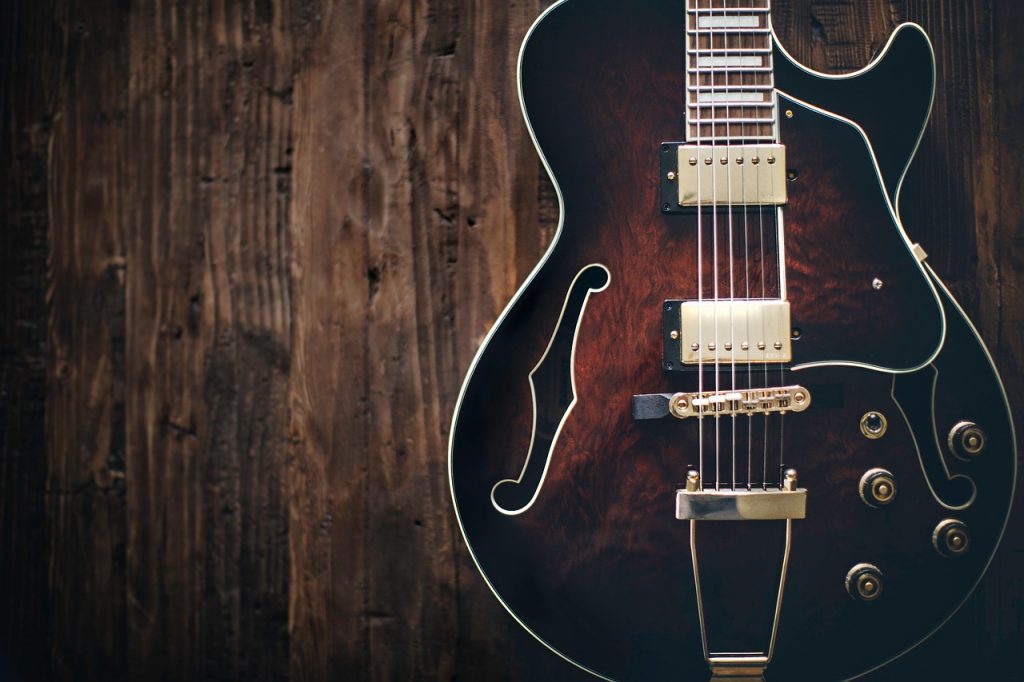When it comes to knowing how to tune a guitar by ear, it is an absolute necessity for any guitarist. This is because your guitar is likely to go out of tune at any time, and you may not always have a tuner available.
This article covers everything you need to know about tuning your guitar by ear, including the tuning of open strings and the method of natural harmonics.
Tuning your guitar by ear
Tuning your guitar by ear can be done in two steps – first, tune one of your strings with a reference note from an external source, then tune the rest of the guitar strings.
Step 1: How to tune a guitar by ear using a reference note
The reference note used for standard tuning is the note of A at the frequency of 440 Hz. Here, the note is reproduced from an external source on the 5th open string of the guitar, this string being the A string.
If you can access a tuned instrument (like a keyboard piano), play the required key on the keyboard for the string you wish to tune and compare the notes.
Listen out for that “beating” sensation and keep tuning until the beats disappear.
Step 2: Tuning the rest of the guitar strings
This process is done relative to the A string, which was previously tuned. It can be carried out according to one of these two distinct methods:
- Relative tuning of open strings;
- Method of natural harmonics.
Relative tuning of open strings
This method makes it easy to tune your guitar in its entirety. But to achieve this, you must tune the A string beforehand.
- Tuning the D string
After that the reference note, the string to be tuned is the D string. Play the D note on the A string; that is, play the note of the 5th fret on the A string. Then adjust the D string using this key.
- G string tuning
Play the note of the 5th fret on the D string. Again, adjust the G string using its key.
- B string tuning
Play the B note on the G string; play the note in the 4th fret on the B string.
- High E string tuning
Play the E note on the B string, that is, play the note of the 5th fret of the B string.
- Low E string tuning
To tune the low E string, use the open A string as a reference; on the 5th fret of the low E string, strike the A note. Then play the open A string. Next, adjust the low E string according to the open A string.
TIP: If you can’t tell if it’s lower or higher, tune it down a bit, then tune it up again. It is always easier for the ear to tune from low to high than the other way around.
The natural harmonics method
The method of tuning with natural harmonics begins with tuning the A string.
Using the sound of an A from an external source such as a piano or another guitar, play the natural harmonic at the 12th fret of the A string. Then adjust your A string so that the string’s pitch matches that of the external source.
Below are straightforward methods on how to tune a guitar by ear, depending on the string to be played.
- E string tuning
Play the octave at the 7th fret on the A string as the reference note, then reproduce this sound on the bottom E string, playing the note at the 5th fret.
- D string tuning
Play the harmonic at the fifth fret on the A string as the reference note, then reproduce this sound on the D string, playing the harmonic at the seventh fret.
- G string tuning
Play the harmonic at the fifth fret on the D string as the reference note; afterward, reproduce this sound on the G string, playing the harmonic at the seventh fret.
- Tuning the B string
Play the harmonic at the seventh fret on the low E string as the reference note, then reproduce this sound with the open B string.
- High E string tuning
Play the harmonic at the fifth fret on the low E string as the reference note, then reproduce this sound with the open high E string.
Conclusion
When it comes to how to tune a guitar by ear by yourself, tune the A string first then use the method of the natural harmonics or open strings. With practice, the process will become easier.



